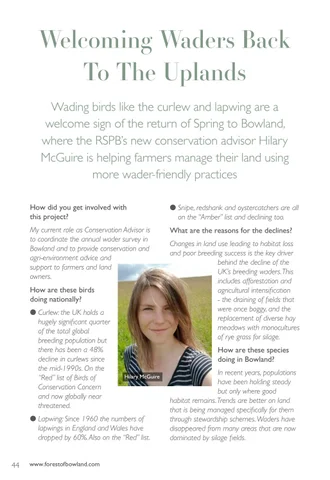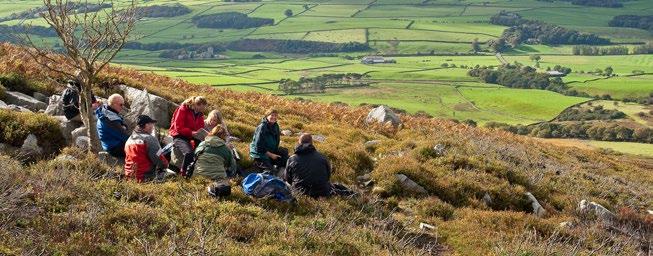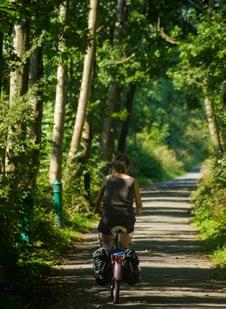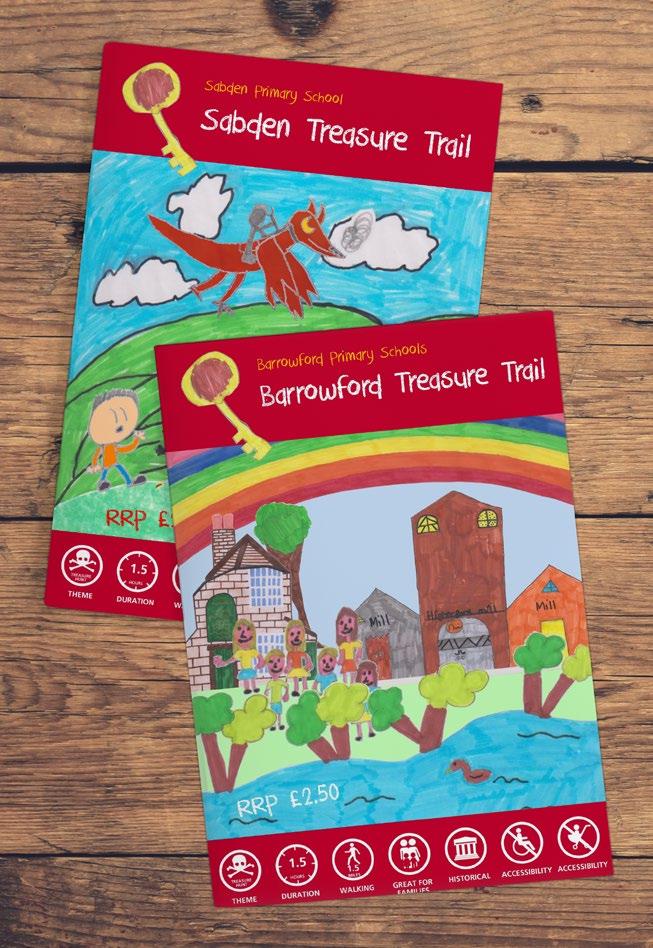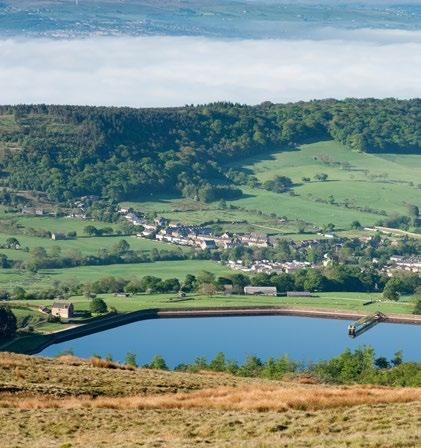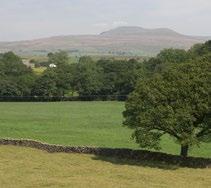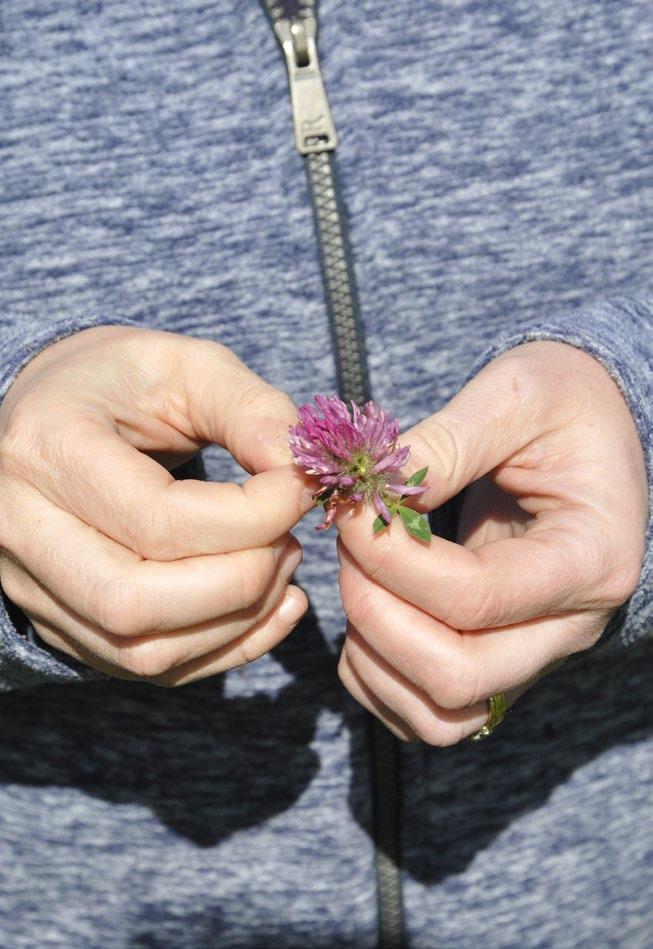Welcoming Waders Back To The Uplands Wading birds like the curlew and lapwing are a welcome sign of the return of Spring to Bowland, where the RSPB’s new conservation advisor Hilary McGuire is helping farmers manage their land using more wader-friendly practices How did you get involved with this project?
l Snipe, redshank and oystercatchers are all on the “Amber” list and declining too.
My current role as Conservation Advisor is to coordinate the annual wader survey in Bowland and to provide conservation and agri-environment advice and support to farmers and land owners.
What are the reasons for the declines?
How are these birds doing nationally? l Curlew: the UK holds a hugely significant quarter of the total global breeding population but there has been a 48% decline in curlews since the mid-1990s. On the “Red” list of Birds of Conservation Concern and now globally near threatened.
How are these species doing in Bowland? Hilary McGuire
l Lapwing: Since 1960 the numbers of lapwings in England and Wales have dropped by 60%. Also on the “Red” list. 44
www.forestofbowland.com
Changes in land use leading to habitat loss and poor breeding success is the key driver behind the decline of the UK’s breeding waders. This includes afforestation and agricultural intensification - the draining of fields that were once boggy, and the replacement of diverse hay meadows with monocultures of rye grass for silage.
In recent years, populations have been holding steady but only where good habitat remains. Trends are better on land that is being managed specifically for them through stewardship schemes. Waders have disappeared from many areas that are now dominated by silage fields.
